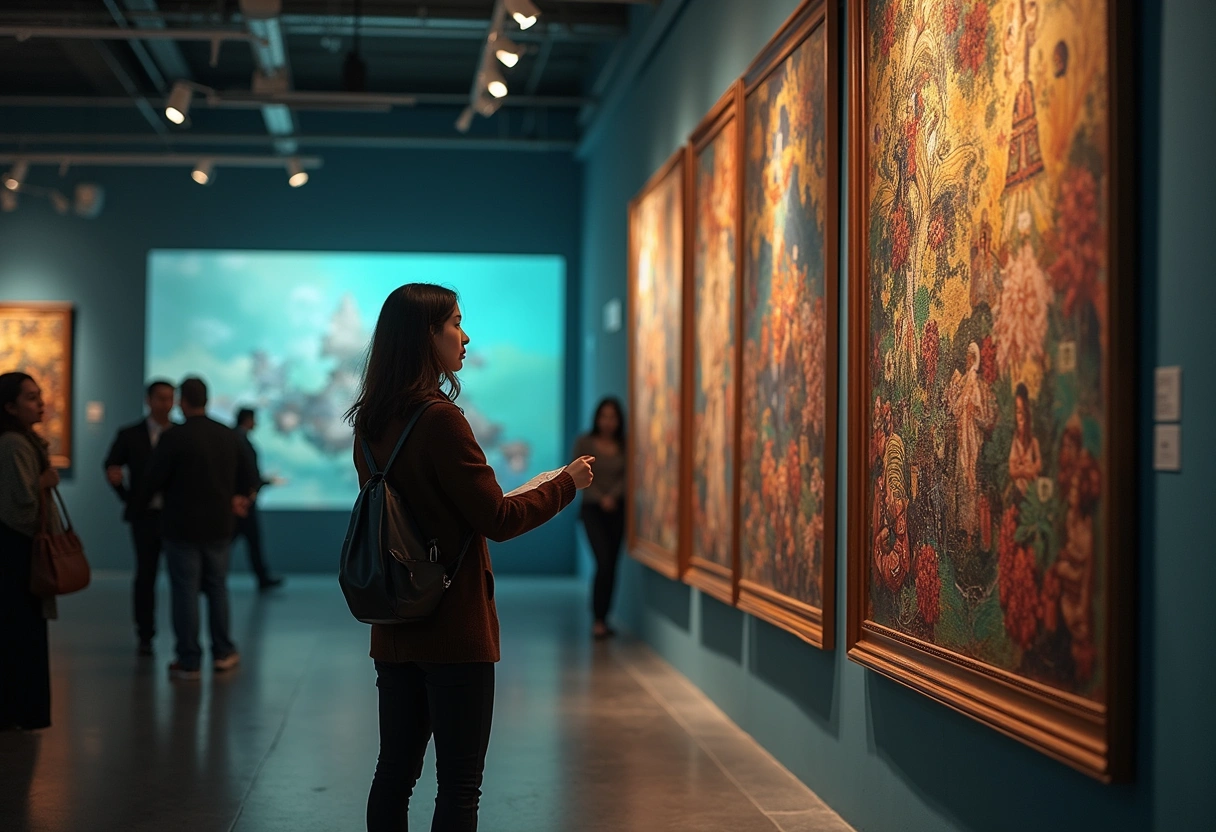The realm of art investments is undergoing a seismic shift, largely due to the tokenization of real world assets. This innovative approach is fundamentally changing how investors engage with art, moving away from traditional models that often restrict access and transparency. By leveraging blockchain technology, art can now be fractionally owned, bought, and sold with unprecedented ease, making it more accessible to a broader range of investors. This article delves into the intricacies of how the tokenization of real world assets is transforming art investments, alongside exploring the comparative analysis of traditional versus tokenized asset investment.
Understanding Tokenization of Real World Assets

What is Tokenization?
Tokenization refers to the process of converting ownership of a tangible or intangible asset into a digital token on a blockchain. This method provides a secure and immutable record of ownership, greatly enhancing the transparency and efficiency of transactions. In the context of art, tokenization allows artworks to be represented as non-fungible tokens (NFTs), enabling fractional ownership and easier transfer of ownership rights.
Benefits of Tokenization in Art Investments
The tokenization of real world assets comes with numerous advantages that are particularly beneficial to art investments:
- Increased Liquidity: Traditionally, art investments are illiquid, often requiring considerable time and effort to sell. Tokenization enables quicker transactions, allowing investors to buy or sell their stakes in artworks without the lengthy processes typically involved in traditional art sales.
- Fractional Ownership: Tokenization allows multiple investors to own a portion of a high-value artwork. This lowers the barrier to entry for investors who may not have the capital to purchase an entire piece.
- Global Access: Art investments have historically been limited to certain demographics and geographical locations. Tokenization democratizes access, allowing global investors to participate in the art market without needing to be physically present.
- Enhanced Transparency: Blockchain technology provides a transparent ledger of ownership and transaction history. This reduces the risks of fraud and disputes over provenance, making it easier for investors to trust the authenticity of the artworks.
Comparative Analysis: Traditional vs. Tokenized Asset Investment

Traditional Art Investment Model
Investing in art traditionally involves purchasing physical pieces, often requiring significant capital. Investors must navigate a complicated landscape of galleries, auctions, and private sales, which can be time-consuming and opaque. Additionally, traditional art investments are subject to high transaction costs, including auction fees and commissions, which can erode returns.
Tokenized Art Investment Model
In contrast, the tokenized art investment model streamlines the investment process. Investors can engage with digital platforms that facilitate the buying and selling of art NFTs. The costs associated with transactions are often lower due to reduced overhead, and the speed of transactions is vastly improved.
Key Differences
- Accessibility: Traditional art investments are often limited to wealthy individuals and institutions, whereas tokenized investments allow participation from a diverse group of investors.
- Transaction Speed: In traditional models, the process can take weeks or even months. Tokenized transactions can be completed in minutes, thanks to the efficiency of blockchain technology.
- Ownership Verification: Traditional art requires extensive provenance research, which can be complex and uncertain. Tokenized assets provide clear ownership histories on the blockchain, making verification straightforward.
- Market Dynamics: The tokenization of real world assets creates new market dynamics, including the ability to trade art pieces on secondary markets that operate 24/7.
The Role of Blockchain Tokenization in Art Investments

Enhancing Trust with Smart Contracts
Blockchain tokenization utilizes smart contracts, which are self-executing contracts with the terms directly written into code. These contracts automate processes and ensure that transactions are executed only when agreed-upon conditions are met. This feature enhances trust between buyers and sellers, as it eliminates the need for intermediaries, reducing costs and potential conflicts.
NFT Assets and Their Impact
The rise of NFTs has revolutionized the way art is bought and sold. Artists can tokenize their works, providing buyers with a verifiable ownership record and the ability to resell in secondary markets. This has led to a surge in interest from collectors and investors, as NFTs offer unique opportunities for digital art investment that were previously unavailable.
Decentralized Finance and Art Investments
Decentralized finance (DeFi) is closely linked to the tokenization of real world assets, enabling innovative financial products tailored for art investments. For instance, investors can use their art NFTs as collateral for loans, effectively unlocking liquidity without having to sell their pieces. This integration of DeFi into the art market opens new avenues for capital generation and investment strategies.
Common Misconceptions About Tokenization of Real World Assets
Misconception 1: Tokenization is Just for Digital Art
One prevalent misconception is that tokenization is exclusive to digital art. While NFTs have gained significant attention in the digital art space, tokenization can apply to physical artworks as well. By creating NFTs that represent ownership rights in physical pieces, investors can enjoy the benefits of tokenization while still engaging with traditional art.
Misconception 2: Tokenization Eliminates the Need for Expertise
Some believe that the ease of buying and selling tokenized art means that expertise is unnecessary. However, understanding the art market, the value of pieces, and the nuances of blockchain technology remains vital. Investors should conduct thorough research and seek expert advice to navigate this evolving landscape effectively.
Actionable Insights for Investing in Tokenized Art
- Research Platforms: Explore various platforms that offer tokenized art investments. Look for those with strong reputations and transparent practices.
- Understand the Art Market: Gain knowledge about the artists, genres, and market trends. This understanding will help you make informed decisions about which tokenized assets to invest in.
- Evaluate Tokenomics: Analyze the tokenomics of the NFTs you are interested in. Understand how the tokens are structured, including supply, demand, and market dynamics.
- Stay Informed: The blockchain and art markets are rapidly evolving. Stay updated with the latest trends and developments to make the most of your investments.
The Future of Art Investments with Tokenization
As we move further into 2025, the tokenization of real world assets is poised to reshape the art investment landscape. With increasing regulatory clarity and growing acceptance of blockchain technology, more artists and investors are likely to embrace tokenization. This shift could lead to a more vibrant and inclusive art market, where diverse voices and artworks can thrive.
The Intersection of Technology and Art
The integration of Web3 technology and decentralized applications is revolutionizing how art is perceived and valued. Artists are finding new avenues for expression, while investors are discovering innovative ways to engage with art. As tokenization continues to evolve, it will likely pave the way for new forms of artistic collaboration and community building.
Engaging with Edge of Show
The tokenization of real-world art assets is opening new paths for ownership, access, and investment—empowering artists, collectors, and investors to participate in markets that were once limited to a very small circle. This shift gives Web3 participants the ability to unlock liquidity, expand reach, and reshape how value in the arts is created and exchanged.
At Edge of Show, we examine these evolving models and share the insights needed to navigate tokenized art intelligently. Whether you’re an artist exploring new distribution models or an investor looking to allocate into digital asset classes, understanding how tokenization works today can position you ahead of the curve tomorrow.
Tune in to the Edge of Show podcast to explore how tokenization is changing the future of art investment—and discover where the next wave of opportunity is emerging.


.jpg)

.jpg)
.webp)
.webp)
.webp)


.svg)









